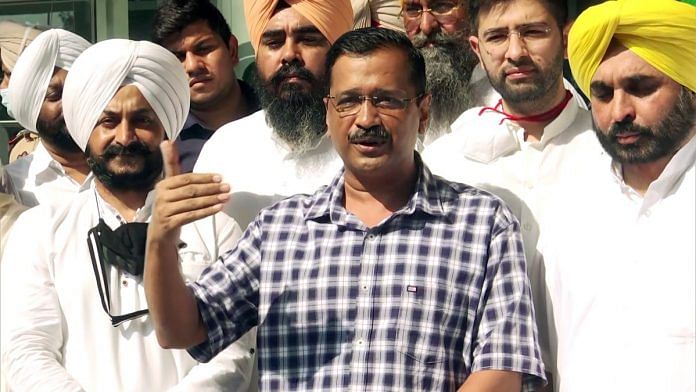The Aam Aadmi Party’s slogan for the 2017 assembly elections should have been warning enough to the people of Punjab, yearning to be free of the duopoly they have been faced with in the past 20 years. “Kejriwal Kejriwal sara Punjab tere nal (Kejriwal the whole Punjab is with you)” — the party promised a new kind of politics, lokniti, as opposed to rajniti. Faced with the pledge that AAP would “change politics” as opposed to “do politics”, the people of Punjab presumed that the party was different. But buoyed by AAP’s stated agenda of participatory democracy, accountability, and financial transparency, the people of Punjab never got the “swaraj” they had pinned their hopes on. The gulf between what was said and what was being done was pronounced. The volunteers invested their time, effort and resources in AAP’s Punjab project. In the end, they felt cheated and robbed.
To understand how AAP is likely to fare in the coming assembly polls in Punjab, it’s important to trace its tryst with the people of the state, which has swivelled from hope in the 2014 parliamentary elections to disappointment in the assembly polls of 2017. In the subsequent defeat of AAP in the Gurdaspur by-poll in October 2017, civic polls in December 2017, and again in the Shahkot assembly by-election in May 2018, the people of Punjab were dealt a double blow—to their own aspirations and to the party they had thought would deliver on its promise of alternative politics.
When AAP entered Punjab, its main focus was to usher in an “alternative politics” based on the need for change in the political discourse. Slogans such as these brought AAP in quick connect with the restive electorates of Punjab who returned four of its candidates to the Lok Sabha in 2014, much before it even had a formal organisational structure in place. After its maiden surprising victory in Punjab, AAP started growing its base in the state while keeping an eye on the 2017 state assembly elections.
Subsequent events, however, highlighted an unsavoury truth—that AAP had viewed Punjab merely as a prerequisite stepping-stone to realise its national ambitions. As Col JS Gill (retd.), one of the pioneers of the AAP movement in Punjab, says: “We were swept by the AAP revolution. It was not just about Anna Hazare or Arvind Kejriwal. It was about the hope of a change from traditional politics of sycophancy, corruption and politics without any ideology. But it was just a bubble.”
So what happened? The biggest mistake of the Punjab AAP was its failure to understand the pulse of the common people who wanted to break the political duopoly. It was against this backdrop and perceived void that the projected image of AAP national convener Kejriwal as an honest and straightforward person seemed tailor-made. But once the electorate became aware of the camouflaged reality lurking beneath the slick public oratory, they withdrew their support from the movement.
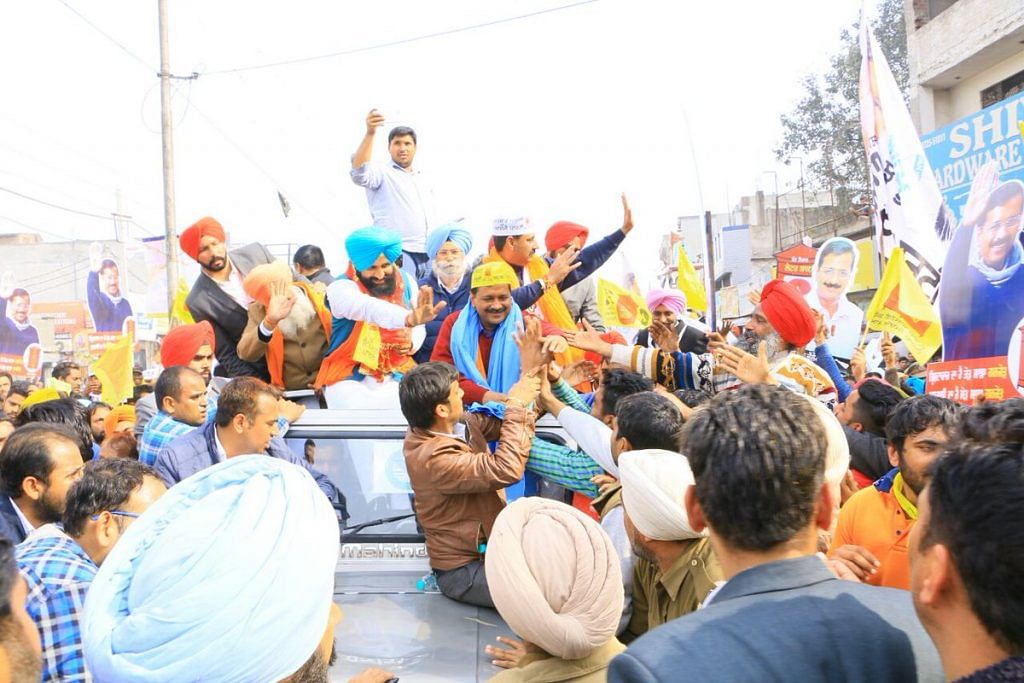
Also read: Three factors that are keeping Punjabi politicians on edge
A series of errors
The first inkling that AAP had no intention of changing from politics as usual was when Kejriwal apologised to Shiromani Akali Dal MLA Bikram Singh Majithia in March 2018 for alleging that Singh was involved in the drug trade. Since ‘Nasha Mukt (drugs free) Punjab’ was one of the main slogans of AAP during the Punjab assembly elections 2017, Kejriwal’s apology allegedly embarrassed all those who reaped political mileage on its account. In protest against the apology, Bhagwant Mann, convenor of Punjab AAP and Sangrur MP, and Aman Arora, co-convenor and Sunam MLA, resigned from their respective posts.
In June 2018, AAP in Punjab was embroiled in controversy again following the remarks of Sukhpal Singh Khaira, leader of the opposition (LoP), in support of the ‘Punjab Referendum 2020’. Though Khaira retracted his statement the very next day, saying he was misunderstood, the Delhi high command not only distanced itself from his remarks but also demanded a written explanation from him for the same, thus deepening an increasingly visible chasm between Delhi AAP and its Punjab unit.
The confrontation between Delhi AAP and its Punjab unit also exposed the hollowness of its boasts about internal democracy, and reduced its overall credibility on other policy positions such as on the drugs mafia and the fight against corruption. As an exercise in damage control, and to revive party morale, the Delhi high command appointed Dr Balbir Singh, a confidante of Kejriwal, as the co-president of the Punjab unit. However, his appointment further aggravated the crisis within the Punjab unit by intensifying the pre-existing resentment against the interference and blatant arrogance of the Delhi high command.
The growing chasm
The intra-party Delhi-Punjab divide became further accentuated with the removal of Sukhpal Singh Khaira from the post of LoP, and his replacement by Harpal Singh Cheema, a Dalit MLA from Dirba assembly constituency. This also vindicated the impression among people in the state that it was Khaira’s insistence on greater autonomy for the state leadership that was the source of his confrontation with the recently appointed Punjab AAP co-president and the central leadership, and his removal.
The sudden removal of Khaira pushed the Punjab AAP to the threshold of a split. The virtual split was quite obvious during the Bathinda convention of 2 August 2018, which was convened by the Khaira group to oppose his undemocratic removal from the position of LoP. Notwithstanding a warning by the Delhi high command that it would be considered as an ‘anti-party’ event, thousands of volunteers from across the state, along with seven of the twenty MLAs of Punjab AAP, attended the event.
This sharp and public division within the Punjab AAP and the open confrontation between one of its groups led by Khaira and the Delhi high command further alienated many people who had reposed their faith in its professed idealism.
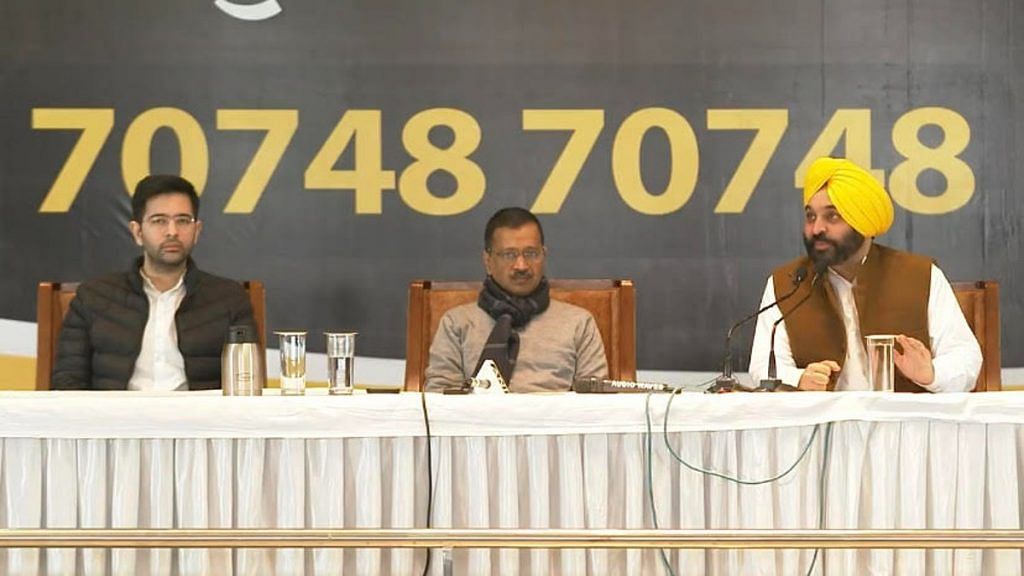
Also read: ‘Thor’ Channi, ‘chance’ for Kejriwal & SAD exposing ‘liars & thugs’ in Punjab’s digital campaign
Gap between rhetoric and reality
The Punjab unit of AAP itself was divided into two segments: the ‘Punjab team’ of local volunteers led by Sucha Singh Chhotepur, H.S. Phoolka and Bhagwant Mann; and the ‘Delhi team’ of outsider observers led by Sanjay Singh and Durgesh Pathak. Both teams appeared riven by internal factionalism.
Only Delhi’s writ was allowed to run in Punjab, and any independence of thought or action was heavily frowned upon and even penalised by the observers. Though primarily local volunteers were chosen to supposedly manage the party structure, the reality was that the outsider observers–who were appointed exclusively by the Delhi high command without any reference whatsoever to the Punjab unit—surreptitiously monitored and managed each and every level of the local structure consisting of four sub-state levels: zones, sectors, assemblies, and circles.
The unstated Machiavellian purpose of such an arrangement was to preempt the stability and growth of the local leadership by fostering its dependence on the Delhi team. In a communication to Jatinder Tomar, an MLA from Delhi, who was sent to manage assembly elections in Punjab in January 2017, Col. L.J.S. Gill, who was coordinator of the Punjab State Booth Management Wing, lamented that: “You have been violating the principles on which basis we made the strategy. Total confusion has been created. Such parallel work won’t help any more. What you said and what you have been doing were two realities. You cannot be trusted. You said that you had come to help. Help did not imply parallel activity. Despite discussions and the orders of Durgesh, a parallel structure has been created to run and coordination is not being allowed. The orders being passed to the Zonal Booth Coordinators are not being conveyed to us, and are against the discussions that took place with me.”
Once the elections came closer, the Delhi team tightened its grip even further. Its clandestine activities not only created confusion among the local volunteers but also made them feel as if they were unwanted in their own homes. The glaring dichotomy between AAP’s rhetoric and practice was ugly and irreversible.
There were two types of AAP followers. The first kind were sincerely committed to the betterment of society and believed that AAP could be the medium for its realisation. The second belonged to a vast majority of those who had joined AAP to promote their own vested interests. They competed with each other for parliamentary and assembly tickets, many even allegedly offering money to members of the Delhi team. Many stories made the rounds in the post-assembly election period about the role of the Delhi observers not only in amassing a lot of money, but also corrupting the socio-cultural fabric of Punjabi society.
As against AAP’s stated principle of “Maan sanmaan (dignity and respect) of all in the party,” the Delhi observers tended to treat the local volunteers like kachra (dirt). Col. Gill recalled how the Delhi team-in-charge, Durgesh Pathak, while describing the volunteers as “kachra” said they would be cleansed from the party once tickets were distributed. During the final stage of the campaign on 28 January 2017, Jatinder Tomar, while talking to a campaign manager whose father was an MLA candidate, said that “the votes would be polled for Arvind Kejriwal and not for his father.”
Similarly, when another former prominent volunteer conveyed to Pathak that many of the MLA candidates had been asking about what kind of duties they were supposed to perform once elected, he retorted angrily, “We did not allot tickets to these guys for such silly questions. Do you know Kejriwal’s style of functioning?”
In another memorable incident, Jatinder Tomar, while passing instructions to a Delhi observer in one of the assembly constituencies, and commenting on the MLA candidates, publicly said, “Char gaalli nikalo aur kaam karvao (abuse them and get the work done).”
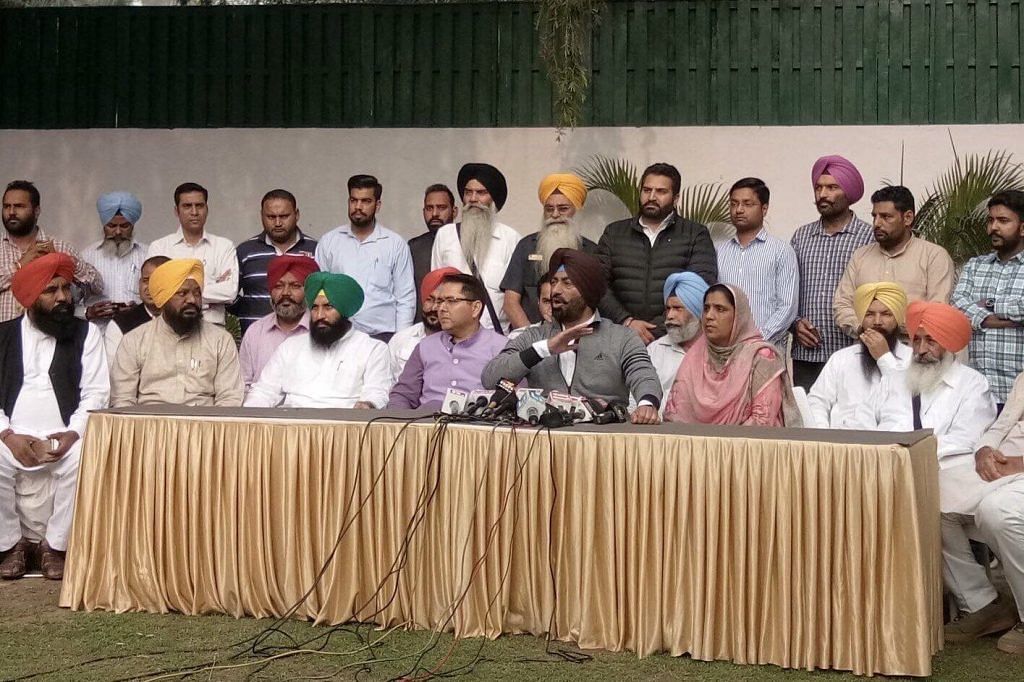
Also read: AAP’s election anthem shows its intentions in Punjab. It’s going past Sikh voters
Same difference
Apart from the imperious attitudes of the central leadership, the modus operandi adopted by AAP for the distribution of tickets proved that it was no different from other parties. During an extended conversation with a former zonal booth coordinator, I was told how a committed volunteer, who had done commendable work at the grassroots, was denied the
ticket in a Scheduled Caste reserved assembly constituency for not being able to arrange the money as allegedly desired by a Delhi team leader. The latter allegedly told him that “kaam bahut hai; daam kumm hai (you had done enough work; but the money you brought was less).”
In yet another case, a Delhi team leader received a large amount of money from a businessman belonging to the catchment area of the above-mentioned zonal booth coordinator for the allotment of an assembly ticket. But when the promised ticket was refused, the alleged businessman got an F.I.R. registered against the leader.
AAP ticket allocation in Punjab went against its stated agenda of participatory democracy and accountability.
What busted the bubble of the ‘third alternative’ in Punjab was the overweening arrogance of AAP’s central leadership and its Delhi team, and false promises that it made to the people of Punjab. Overconfident of Punjab AAP’s victory, Durgesh Pathak used to boast often: “If God Himself descended on earth, even then no one can defeat us. Punjab will be put on fire. We know how to conduct and win elections.”
Belatedly, many dedicated volunteers came to realise that what they had been working towards was nothing but a mirage. The reality that they encountered was a far cry from the promises made by the Delhi team. This simple, but almost unnoticed aspect, was to have massive negative ramifications for the fledgling party. In addition, the volunteers carried a long list of grouses about the observers’ personal conduct, which, more often than not, qualified as simply arrogant, dismissive, unresponsive, inaccessible, demanding, and uncultured.
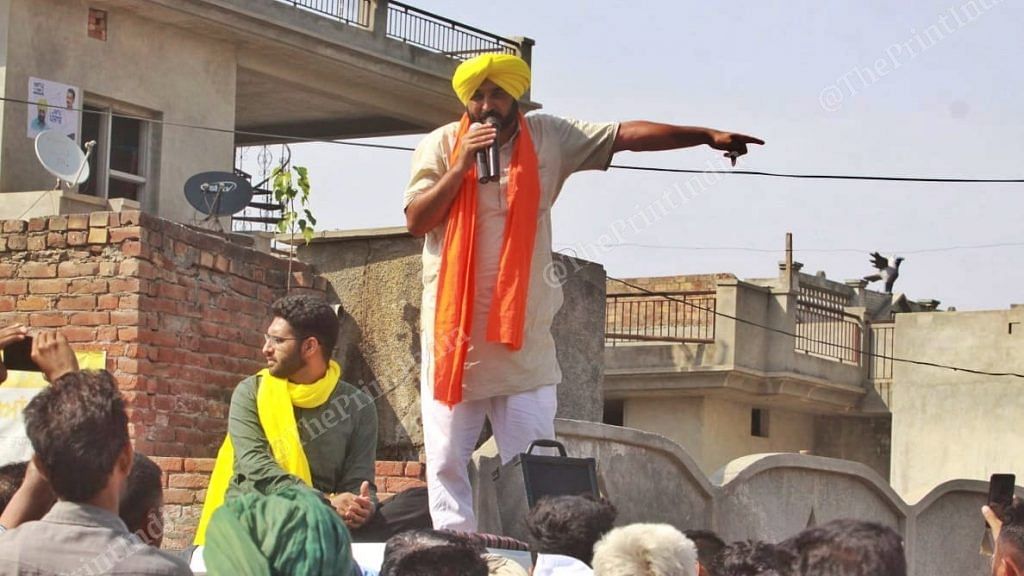
Also read: Why AAP stands to lose the most as farmers decide to go solo in Punjab polls
Out of touch high command
Mesmerised by Kejriwal’s aura, however, the local volunteers considered these observers their saviours. Conversely, the observers often treated local volunteers with disdain. The former were generally noted for cultivating “yes-men/women” volunteers. This was particularly noticeable during the election rallies, where disproportionate time was often granted to a few relatively unknown, and ungifted “leaders”. Though deeply offended by the arrogant behaviour of the Delhi team, volunteers chose not to make their anger public, except isolated incidents. Many respondents told me that the local volunteers knew very well the real aukaat (worth) of the Delhi observers, but did not open their mouths for fear of spoiling AAP’s image in Punjab.
At the level of policy, the Delhi team made several monumental blunders like placing AAP’s jhadu (broom) symbol atop the Golden Temple on a manifesto cover, making a comparison between the Sri Guru Granth Sahib and AAP’s youth manifesto, indulging in vote-bank politics by actively wooing Deras and promising a Dalit deputy chief minister, all of which weakened its fundamental principles. Worse, what deeply alienated a large number of Hindus, Dalits and moderate Sikh electorates from the Punjab AAP was the alleged closeness of its central leadership with some former radical groups in Punjab.
The spontaneous arrival of a large number of NRIs in support of AAP in Punjab lent significant weight to the suspicion of its alleged links with the former pro-Khalistanis, given that many of these had migrated abroad, fearing harassment at home.
Yet another blunder that turned the once-committed Punjab AAP volunteers against their own party was the highly unethical practice on part of Delhi team of promising a single seat to multiple candidates in a given constituency. Last, if not the least, authorising the Delhi team to completely monitor the candidate campaign process turned out to be a strategic blunder. Things deteriorated to such an extent that post the 2017 election result, the observers exited Punjab, allegedly fearing a violent backlash from vengeful volunteers. One of the 13 MLAs of Punjab AAP even objected to the presence of Durgesh Pathak during their 31 July 2018 meeting with Manish Sisodia, Delhi deputy chief minister and AAP Punjab in-charge—the meeting was held to discuss the intra-party crisis over the removal of Khaira from the post of LoP.
With a barely respectable figure of 20 seats in the 2017 state assembly elections, AAP’s performance in Punjab was not only a political anticlimax, but also a moral-ethical debacle of the ‘third alternative’. Will 2022 be any different?
This is an abridged version of a larger ethnographic study published in Journal of Sikh and
Punjab Studies, Vol. 25, No. 1, Spring 2018.
The author is Shaheed Bhagat Singh Chair Professor of Political Science, Panjab University, Chandigarh, and Visiting Professor, Faculty of Arts, Business and Social Sciences, University of Wolverhampton (UK). Views are personal.


